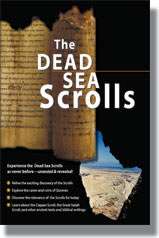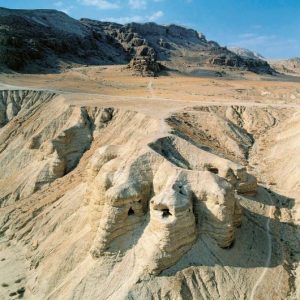Um estudante pediu-me hoje orientação bibliográfica para uma pesquisa sobre os Manuscritos do Mar Morto e, especialmente, para a tese de Norman Golb.
De repente, dei-me conta de que nossa bibliografia em português está defasada em cerca de 10 anos. Nossas editoras simplesmente pararam no tempo. Não traduziram nenhuma das grandes obras que saíram no final do século XX, quando eram comemorados os 50 anos da descoberta dos Manuscritos. Agora, já são 60 anos desde a descoberta e vejo um grande vazio bibliográfico em português nos últimos dez anos.
Reuni abaixo algumas indicações de recursos para estudo. Divididos em: 1. Recursos Online e 2. Bibliografia. Não é nada completo, pois os recursos sobre os Manuscritos do Mar Morto e Qumran são enormes, especialmente em inglês e alemão. São indicações para uma pesquisa básica.
Contudo, quero, mais uma vez, deixar meu apelo: é preciso ler inglês! E a maioria de nossos estudantes não lê inglês! Escolas, governantes, professores, estudantes: acordem! Sem inglês, só com as poucas traduções que temos, sempre estaremos 10, 15, 20 anos atrasados. E observem que atualmente acontece um fenômeno raro em nossa história: livros em inglês podem ser comprados em livrarias virtuais norte-americanas por preços até menores do que suas (eventuais) traduções para o português.
Quanto aos exegetas, não preciso fazer outra coisa senão me lembrar da frase sempre repetida por Frei Rosário Joffily, lá na Serra da Piedade, Caeté, MG, para o Benjamim, o Emanuel e eu, quando, estudando em janeiro e julho no Asilo São Luiz, ao pé da Serra, íamos visitá-lo após o jantar: “Vocês exegetas jamais devem ler traduções. Leiam um livro sempre em sua língua original”. Aliás, como ele sempre fazia em sua enorme biblioteca, naquele frio vento que zunia no topo da Serra.
1. Recursos Online
ANE
Arquivos da lista de discussão ANE, na Universidade de Chicago.
ANE-3
Arquivos da lista de discussão ANE-3.
Os essênios: a racionalização da solidariedade
Artigo na Ayrton’s Biblical Page. Além do texto, que trata desde a descoberta dos Manuscritos até a teologia dos essênios, há links e bibliografia em português e inglês.
Qumranica.com
Blog criado para um curso sobre os Manuscritos do Mar Morto ministrado por James R. Davila (do biblioblog PaleoJudaica.com), na Universidade St. Andrews, Escócia. O curso começou em 8 de fevereiro e terminou em 11 de maio de 2005.
The Bible and Interpretation: Dead Sea Scrolls
Vários artigos sobre os Manuscritos do Mar Morto publicados na revista The Bible and Interpretation
The Dead Sea Scrolls and Other Hebrew MSS Project
Vários artigos sobre os Manuscritos do Mar Morto. Um dos organizadores deste projeto, do Instituto Oriental da Universidade de Chicago, é Norman Golb.
The Orion Center for the Study of the Dead Sea Scrolls and Asssociated Literature
O Orion Center pertence ao Instituto de Estudos Judaicos da Universidade Hebraica de Jerusalém. Variados e atualizados recursos para o estudo dos Manuscritos.
2. Bibliografia
BILDI – Bibelwissenschaftliche Literaturdokumentation Innsbruck
Banco de dados bibliográfico sobre literatura bíblica. Do Departamento para Estudos Bíblicos e Teologia Fundamental da Faculdade de Teologia Católica da Universidade Leopold Franz de Innsbruck, Áustria. Em alemão e inglês.
Dead Sea Scrolls Bibliography
Bibliografia sobre os Manuscritos do Mar Morto, do Orion Center. Lista livros, artigos e resenhas que tratam dos Manuscritos do Mar Morto de 1995 até hoje. A bibliografia é atualizada semanalmente.
Index Theologicus (IxTheo)
Banco de dados da Biblioteca da Universidade de Tübingen, Alemanha. Nele podem ser feitas buscas de artigos de mais de 600 periódicos em Teologia e Bíblia, ensaios de Festschriften, publicações de Congressos e textos publicados na Internet. O banco de dados pode ser acessado em alemão e inglês.
Searching for academic research on the web
Recursos sofisticados para buscas acadêmicas na web, organizados por David Instone-Brewer, da Tyndale House, Cambridge, Reino Unido.
Testi di Qumran – Alcuni suggerimenti per la ricerca
Bibliografia e orientação para a pesquisa em texto elaborado pelo Prof. Joseph Sievers na página do Pontifício Instituto Bíblico, Roma.
WorldCat
Um grande banco de dados de livros, artigos, documentos, fotos e vídeos que podem ser encontrados em bibliotecas da maior parte do mundo.

